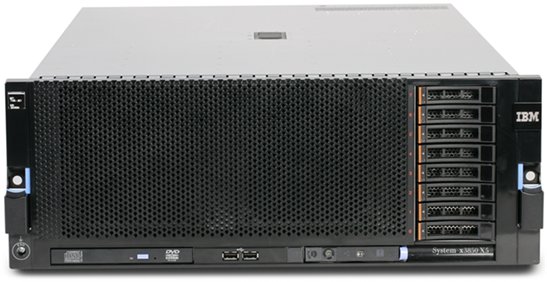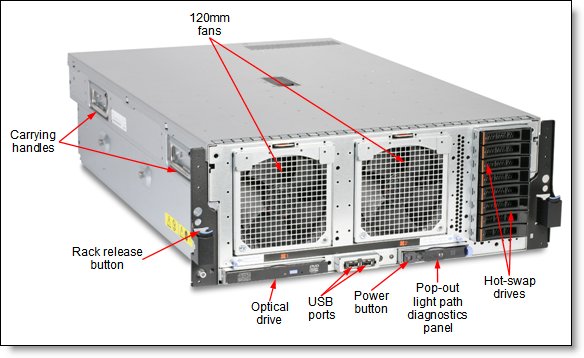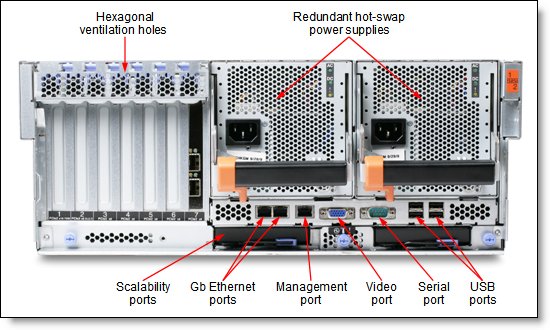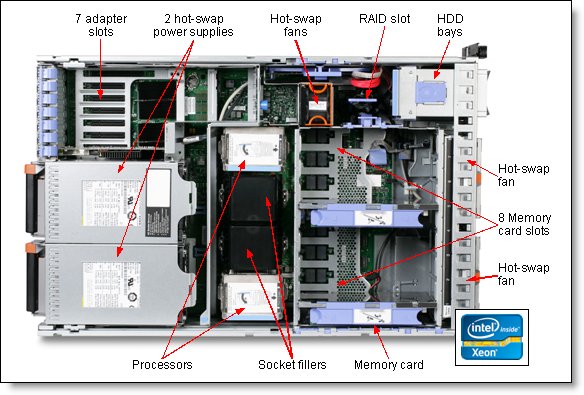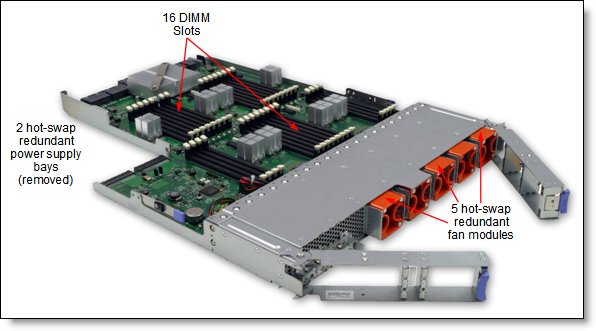| Machine type |
7143 |
| Firmware |
IBM-signed firmware |
| Form factor/height |
Rack/4U per chassis; MAX5 adds 1U. |
| Scalability |
Machine type 7143 can scale as follows:
- One server (4U rack-mounted complex)
- One server with MAX5 memory expansion unit (5U rack-mounted complex)
- Two servers with two MAX5 memory expansion units (10U rack-mounted complex)
|
| Processor type |
Machine type 7143: Intel Xeon E7-8800 and E7-4800 families, up to 10 cores. |
| Number of processors |
Most models: 2 standard (some 4 standard); 4 maximum. |
| Cache (max) |
Up to 30 MB L3 cache |
| Memory DIMM sockets |
Up to eight memory cards, each with eight DIMM sockets (64 DIMM sockets total).
MAX5 adds 32 DIMM sockets. |
| Memory maximums |
2.0 TB using 32 GB DIMMs. Up to 3.0 TB with the addition of MAX5.
With two x3850 X5 servers and two MAX5 units, total capacity up to 6.0 TB |
| Expansion slots |
Eight slots total:
- Seven PCIe 2.0 slots (one used by 10 Gb Ethernet card, if included).
- One PCIe 2.0 slot for supported RAID card.
|
| Disk bays |
Eight 2.5" hot-swap SAS or sixteen 1.8" solid-state drives (SSD). |
| Maximum internal storage |
Using NL SAS HDDs: 8 TB per chassis with eight 1 TB drives
Using 2. 5-inch SSDs: 12.8 TB per chassis with eight 1.6 TB drives
Using eXFlash solid-state drives: 8 TB per chassis with 16x 512 GB SSDs |
| Network interface |
Two 1 Gb Ethernet ports. Broadcom 5709C controller.
Emulex 10Gb Virtual Fabric Adapter standard on most models with two 10 Gb Ethernet ports |
| Power supply (std/max) |
Up to two hot-swap redundant 1975 W power supplies |
| Hot-swap components |
Power supplies, fans, hard disk drives, and solid-state-drives. |
| RAID support |
7143: Integrated RAID-0, RAID-1 with ServeRAID M1015 in dedicated PCIe slot
Optional RAID-5, 6, 10, 50, 60 |
| External ports |
Rear: Four scalability ports , one Ethernet for systems management, one serial port, four USB 2.0, one VGA, two Gb Ethernet
Front: Two USB 2.0
Internal: One USB 2.0 port for Embedded Hypervisor |
| Systems management |
Alert on LAN 2, Automatic Server Restart, IBM Systems Director,
ServerGuide, Integrated Management Module (IMM), light path diagnostics
(independently powered), Predictive Failure Analysis on hard disk
drives, processors, VRMs, fans and memory, Wake on LAN, Dynamic System
Analysis, QPI Faildown. |
| Operating systems supported |
Microsoft® Windows Server® 2008 (Standard, Enterprise and Data
Center Editions 64-bit), 64-bit Red Hat Enterprise Linux®, 64-bit SUSE
Enterprise Linux, (Server and Advanced Server), VMware vSphere
Hypervisor |
| Limited warranty |
Three-year customer-replaceable unit and onsite limited warranty. |
| Dimensions |
Width: 440 mm (17.3 inches), depth: 712 mm (28.0 inches), height: 173 mm (6.8 inches) or 4 rack units (4U) |
| Weight |
Minimum configuration: 35.4 kg (78 lb), maximum configuration: 49.9 kg (110 lb) |



